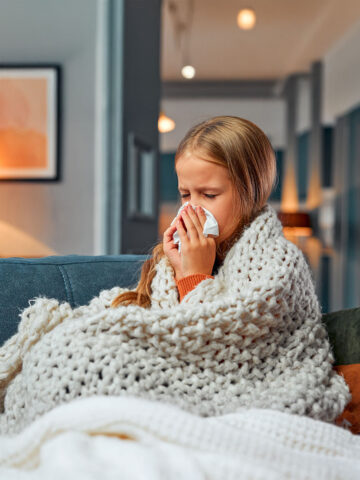Creatine is a popular sports supplement for teens, often being used with the hope to enhance performance when participating in sports, workouts or weightlifting.
However, there are some misconceptions about how safe and effective creatine is for teens. Here, Dr. Matthew Kornswiet, sports medicine physician and pediatrician in the CHOC Primary Care Network, answers commonly-asked questions about creatine use for teens.
What is creatine and what is it used for?
Creatine (pronounced: KREE-eh-teen) is a substance produced in the body. It is involved in making energy for muscle contractions.
Man-made creatine is often sold as a powder or pill, and in energy bars and drink mixes. Studies show that it can help athletes have short bursts of intense exercise with short recovery times (such as sprinting and powerlifting) and increase lean muscle mass.
Is it common for teens to use creatine?
According to the 2016 Monitoring the Future Survey, close to 17 percent of 12th-grade males reported using creatine.
Creatine is commonly marketed to teen athletes to boost performance when weight training or playing sports and increase muscle mass by encouraging water uptake into muscles.
Should kids under 18 use creatine?
No. Although reports have indicated that short-term use of creatine is generally safe for adults, the American Academy of Pediatrics states that few studies have looked at the long-term safety of creatine use by teens. Doctors and most medical societies usually recommend creatine be used only by athletes over 18 years old.
Since creatine is sold as a dietary supplement, it is not subject to federal regulations to ensure product safety or effectiveness. Because of this, there is no guarantee that creatine being purchased online, at drugstores, at health food stores or at gyms, is pure creatine — rather than being mixed with unknown substances that could have other effects on the body.
What side effects may creatine cause?
Even though creatine may have benefits, it can cause side effects such as:
- Weight gain.
- Joint stiffness.
- Nausea.
- Muscle cramping.
- Headaches.
Some research shows that creatine can harm the kidneys.
What can teens do to prepare for a workout or game instead of taking creatine?
The safest and most effective way to provide the body with all the building blocks it needs is through normal foods. Healthy, well-balanced meals and snacks give kids the nutrients they need to do well in sports and during workouts. Besides getting the right number of calories, eating a variety of nutritious foods will help them play at their best — without needing to use creatine.
Active, athletic kids and teens need:
- Vitamins and minerals: Kids need a variety of vitamins and minerals. Calcium and iron are two important minerals for athletes:
- Calcium helps build strong bones to resist breaking and stress fractures. Calcium-rich foods include low-fat dairy products like milk, yogurt and cheese, as well as leafy green vegetables such as broccoli.
- Iron helps carry oxygen to all the different body parts that need it. Iron-rich foods include lean meat, chicken, tuna, salmon, eggs, dried fruits, leafy green vegetables and fortified whole grains.
- Protein: Protein helps build and repair muscles, and most kids get plenty of it through a balanced diet. Protein-rich foods include fish, lean meat and poultry, dairy products, beans, nuts and soy products.
- Carbohydrates: Carbs provide energy for the body and are an important source of fuel for a young athlete. Without carbs in their diet, kids will be running on empty. When choosing carbs, look for whole-grain foods like whole-wheat pasta, brown rice, whole-grain bread and cereal and plenty of fruits and vegetables.
For more health and wellness resources from the pediatric experts at CHOC, sign up for the Kids Health newsletter.
Find a CHOC Primary Care Pediatrician
From babies to teens, pediatricians from CHOC’s Primary Care Network partner with parents to offer immunizations, sick visits, sports physicals and more.





